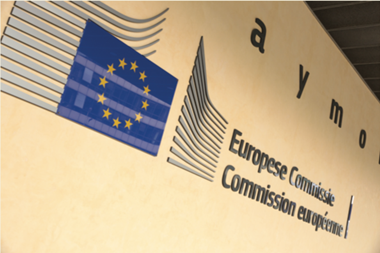The European Commission’s expert group on sustainable finance today published its final recommendations for a “taxonomy” of environmentally sustainable activities, which is at the heart of the EU executive’s plan to harness the finance sector for its fight against climate change.
“For the taxonomy to work in practice, investors will need data about company or issuer performance on the taxonomy activity criteria,” the technical expert group (TEG) said.
Commission vice-president Valdis Dombrovskis welcomed the reports published by the TEG as “an important contribution to European policy-making and global debate on green finance”.
The TEG said “investors and other potential users of the taxonomy can already start to understand [the taxonomy’s] implications” through the reports.
The main report sets out technical screening criteria for 67 economic activities that can make a substantial contribution to climate change mitigation across sectors such as agriculture, forestry and manufacturing. It also includes a methodology and “worked examples” for evaluating contributions to climate change adaptation.
Guidance and case studies for investors preparing to use the taxonomy are also included in the reports.
All the Technical Expert Group on #SustainableFinance rapporteurs presenting their reports today @nathanafabian @EPhilipova @AilaAho @JLBlasco_me pic.twitter.com/exCrGl9gDV
— The PRI (@PRI_News) June 18, 2019
The TEG also published a report on its recommendations for an EU green bond standard and an “interim” report on EU climate benchmarks.
The European Commission, meanwhile, has released new non-binding guidelines for corporate reporting of climate-related information, on which several of its sustainable finance measures to some extent depend.
Disclosure questions

Publication of the TEG’s reports comes as political agreement on a taxonomy regulation by the EU Council and the European Parliament remains outstanding. Under the Commission’s proposal, asset managers marketing investment products as environmentally sustainable would need to explain whether, and how, they have used the taxonomy criteria. Investors would be free to explain that that they use alternative methodologies.
Some EU governments, however, are against a disclosure obligation. According to conservation campaign organisation WWF, Germany has proposed that the disclosure be voluntary.
Helena Viñes Fiestas, global head of stewardship and policy at BNP Paribas Asset Management and a member of the TEG, said dropping the requirement to disclose the proportion of an apparently green product’s investments in taxonomy-eligible activities would render the taxonomy “useless”. This was a personal view, she said.
She also said implementation of the taxonomy would be challenging for investors given a lack of data, adding that “this will prove how necessary it is to make mandatory some reporting by companies”.
‘Transition activities’

The TEG’s proposed taxonomy includes economic activities that are already low carbon as well as “transition activities”, such as steel or cement manufacturing. According to Brenda Kramer, responsible investment adviser at PGGM and a member of the TEG, this was one of the ways in which the TEG’s taxonomy proposal had evolved over the year.
There were many ways in which investors could begin using the taxonomy straight away, she added.
The Commission said including transitional activities was needed “in order to compile the most comprehensive classification system for sustainable activities to date”. The WWF added that it would “address many of the critiques that we are hearing on the taxonomy, and enable a wider transition of the economy towards sustainability benefiting more companies and financial institutions”.
A spokesperson for the European Fund and Asset Management Association welcomed the fact that the TEG’s taxonomy proposals included transition activities as these were “key to ensure the success of the taxonomy and to enable a transformation towards a sustainable economy”.
“While our members are hopeful that the TEG proposals will facilitate science and evidence-based investments in green activities, concerns remain about how to translate this into a user-friendly system that can be readily applied by the financial services industry,” the spokesperson added.
“In any case, financial product disclosure based around the taxonomy needs to be underpinned by comprehensive and reliable data at the company and issuer level – otherwise the taxonomy framework, regardless of strength of intention or quality of design, would be impossible to use without the risk of misleading end investors.”
The revision of the Non-Financial Reporting Directive guidelines was welcome, but “may not be sufficient as the guidelines are not binding”, the spokesperson said.
The guidelines published by the Commission today are a supplement to the general guidelines on the directive that were published in June 2017.
Next steps
With its mandate having been extended until the end of this year, the TEG will launch a call for feedback by early July on those technical screening criteria that have not yet been subject to public consultation.
It will also refine and further develop “some incomplete aspects” of the proposed criteria, and develop further guidance on implementation and use of the taxonomy.
The TEG’s recommendations are designed to inform a proposed delegated act to implement the taxonomy. Under the draft regulation currently under discussion, this would be developed by the Commission and subject to full public consultation as required under standard procedures.
The Commission will be hosting a “stakeholder dialogue” on climate-related reporting and the TEG reports on Monday.
A different perspective
Jakob Thomä, managing director at think tank 2° Investing Initiative:
“The TEG reports released today are impressive in breadth and scope. However, they unfortunately carry all of the birth defects intrinsic to the TEG mandate and the broader agenda of the European Commission. Instead of reflecting the diversity of retail investors’ preferences on sustainability and climate, and their demand to have real impact with their money, the focus of this work is on creating a harmonised taxonomy as way of a ‘one size fits all’.
“Countless banks have told me ‘we’ll wait until the taxonomy is out’ before taking action. Meanwhile, our research in the field suggests sustainability objectives are personal and diverse. We risk shoehorning retail investors into a single framework.
“That is not the fault of the TEG, who have done an admirable job, but the problem with the thinking by the Commission that suggests sustainable finance can be reduced to a definition of a limited number of green activities that likely reflect a fraction of the market.
“The apparent strategy is to create a ‘green bubble’ for these green assets (currently less than 1%), rather than tackling the broader ‘unsustainability’ of capital markets. The strategy risks artificially inflating green asset prices without actually creating more green, thus creating potential financial risk, earmarking green as a ‘niche’ concept, and creating a government-driven approach to something that is dynamic and, yes, also personal.”

























1 Reader's comment